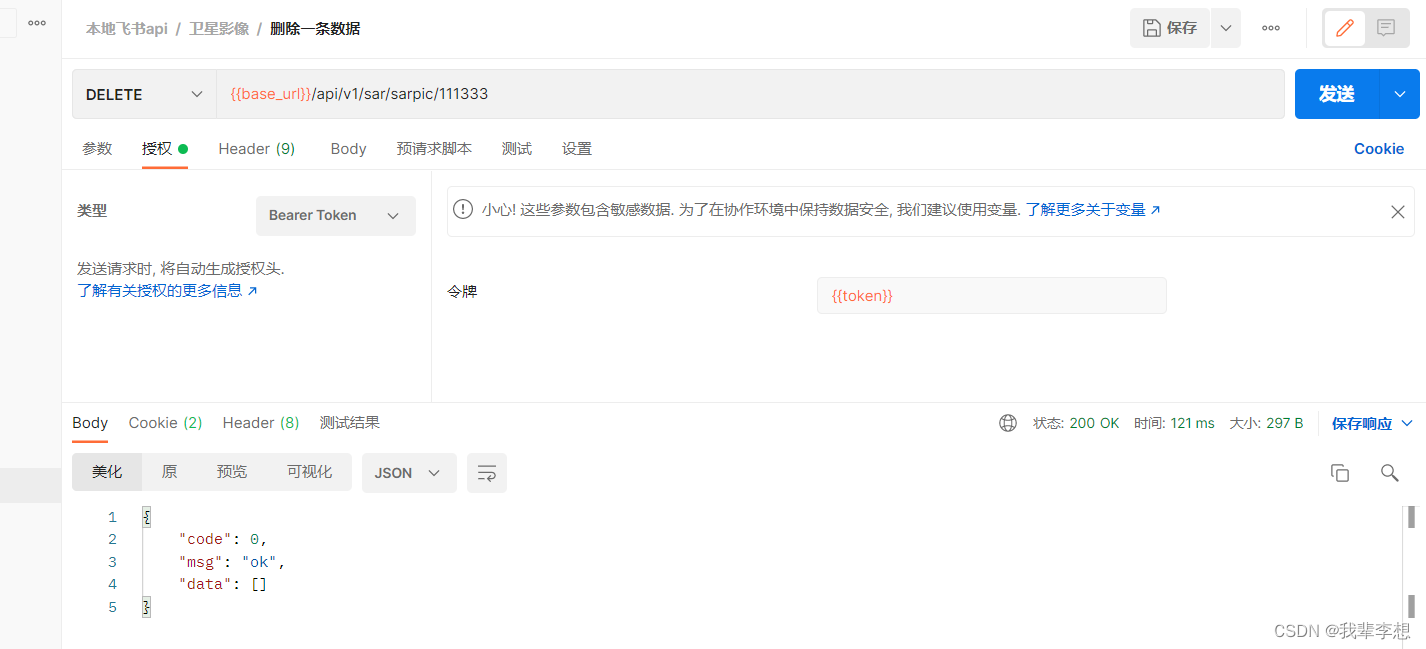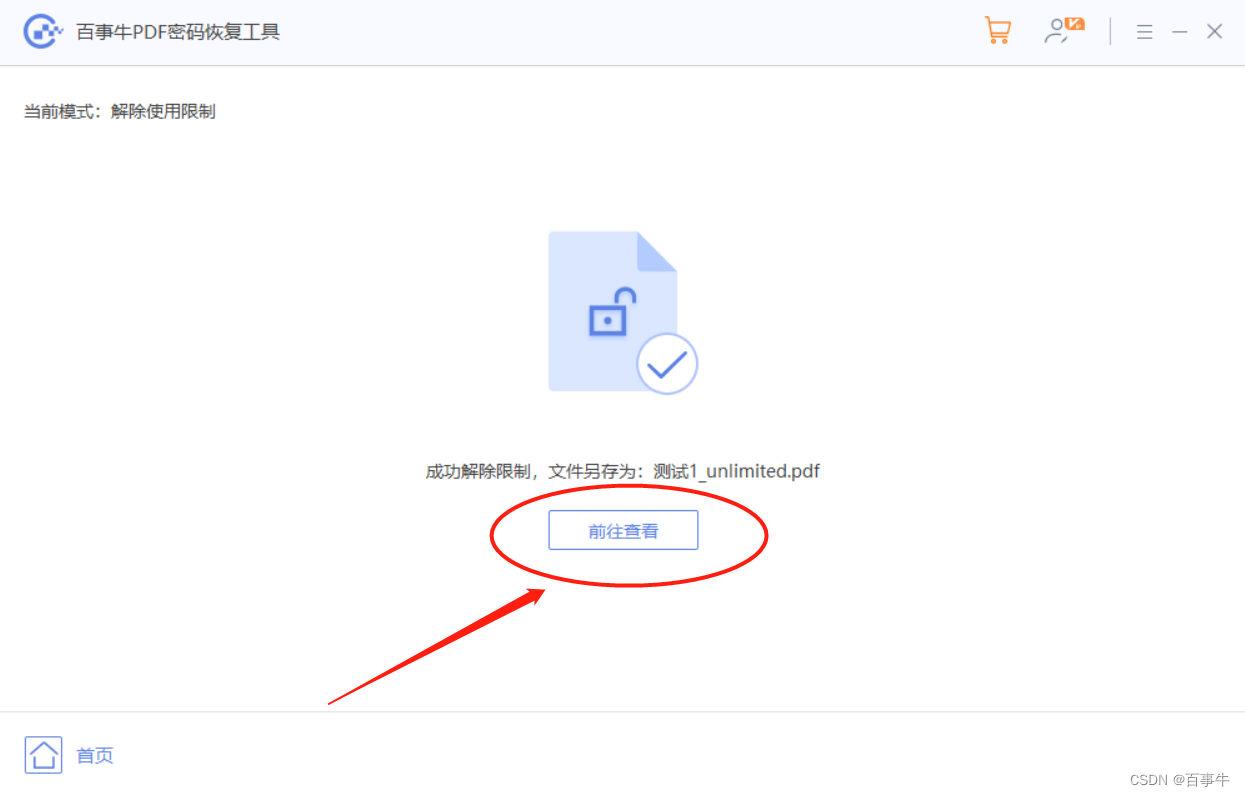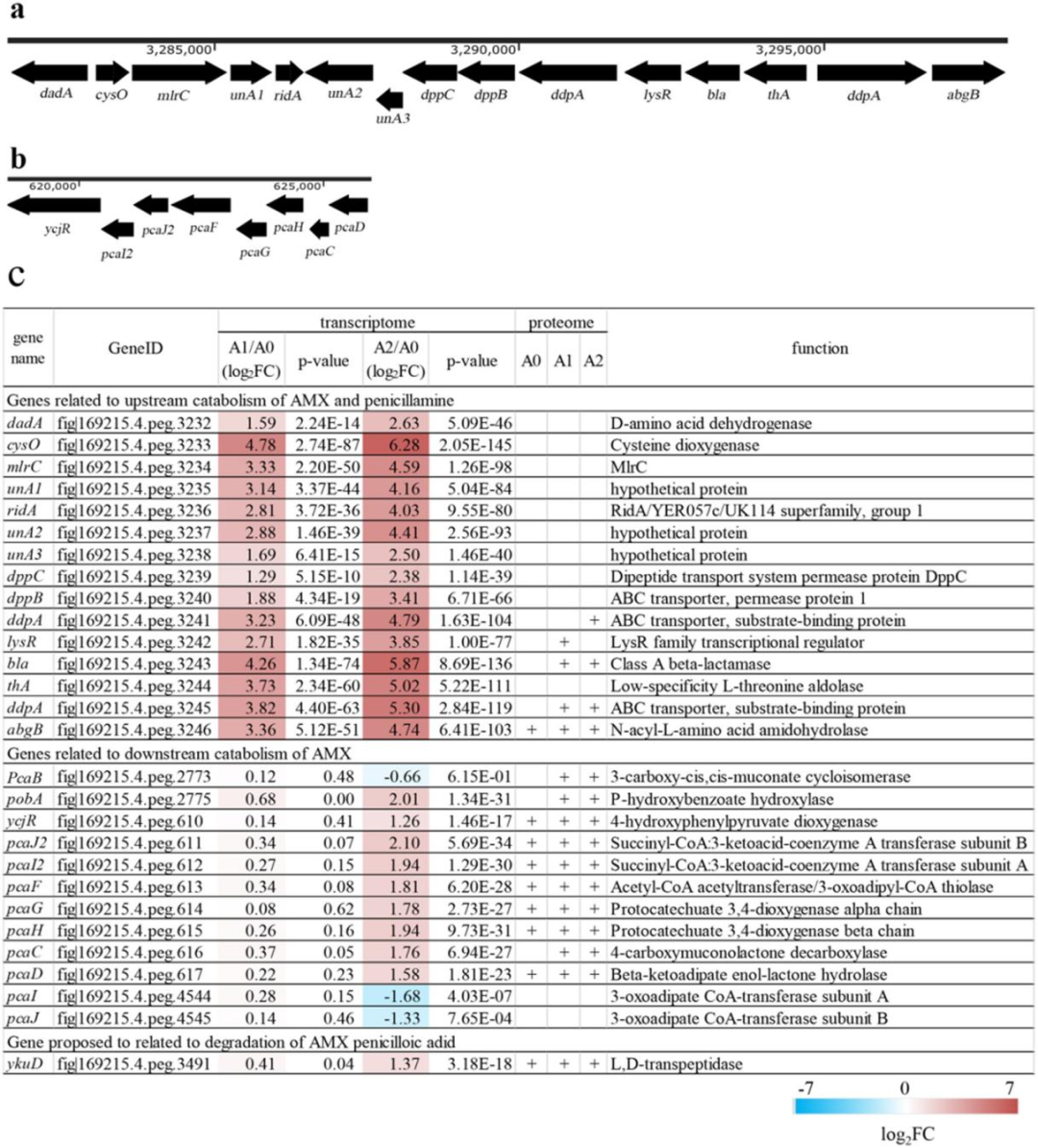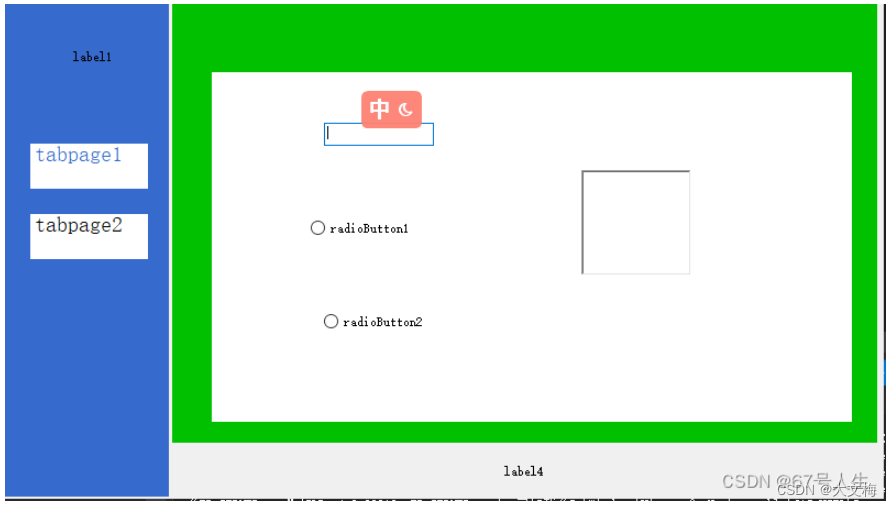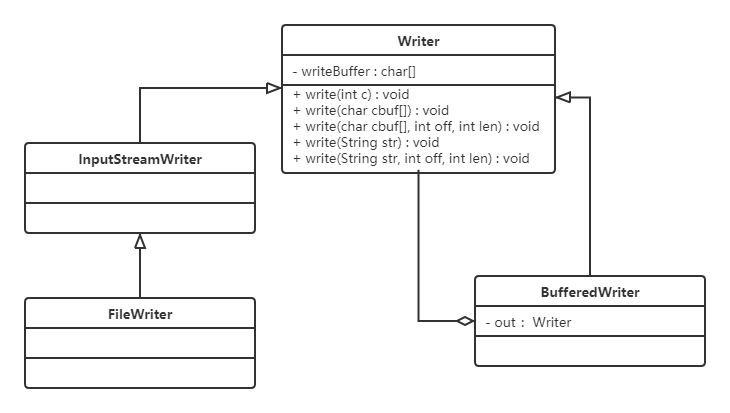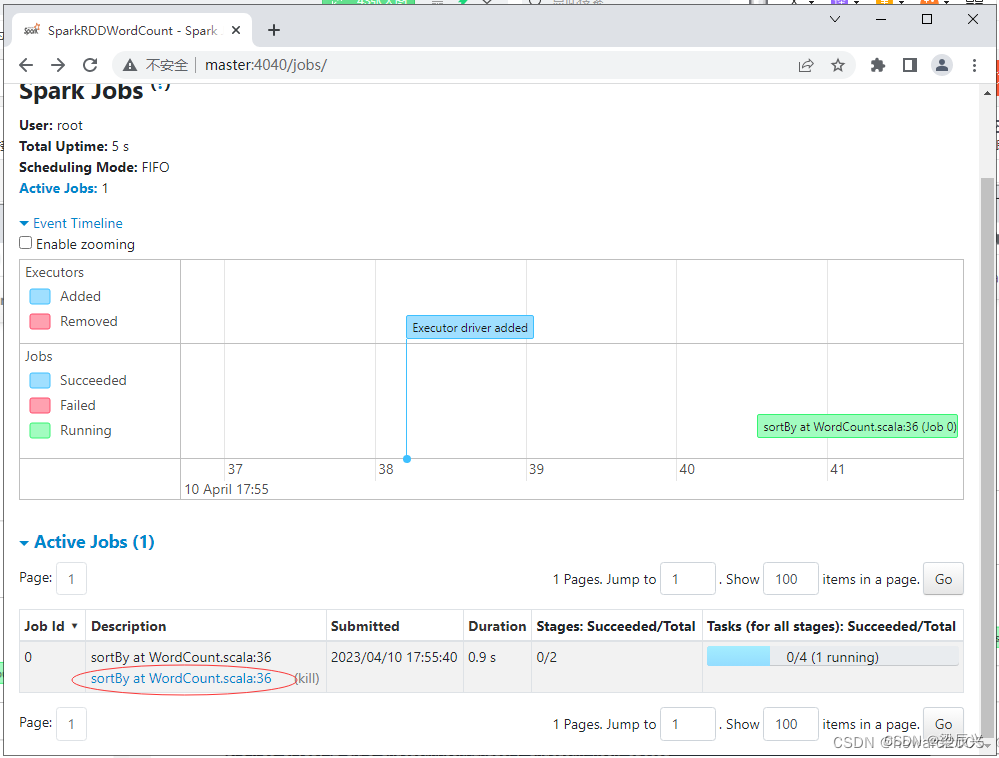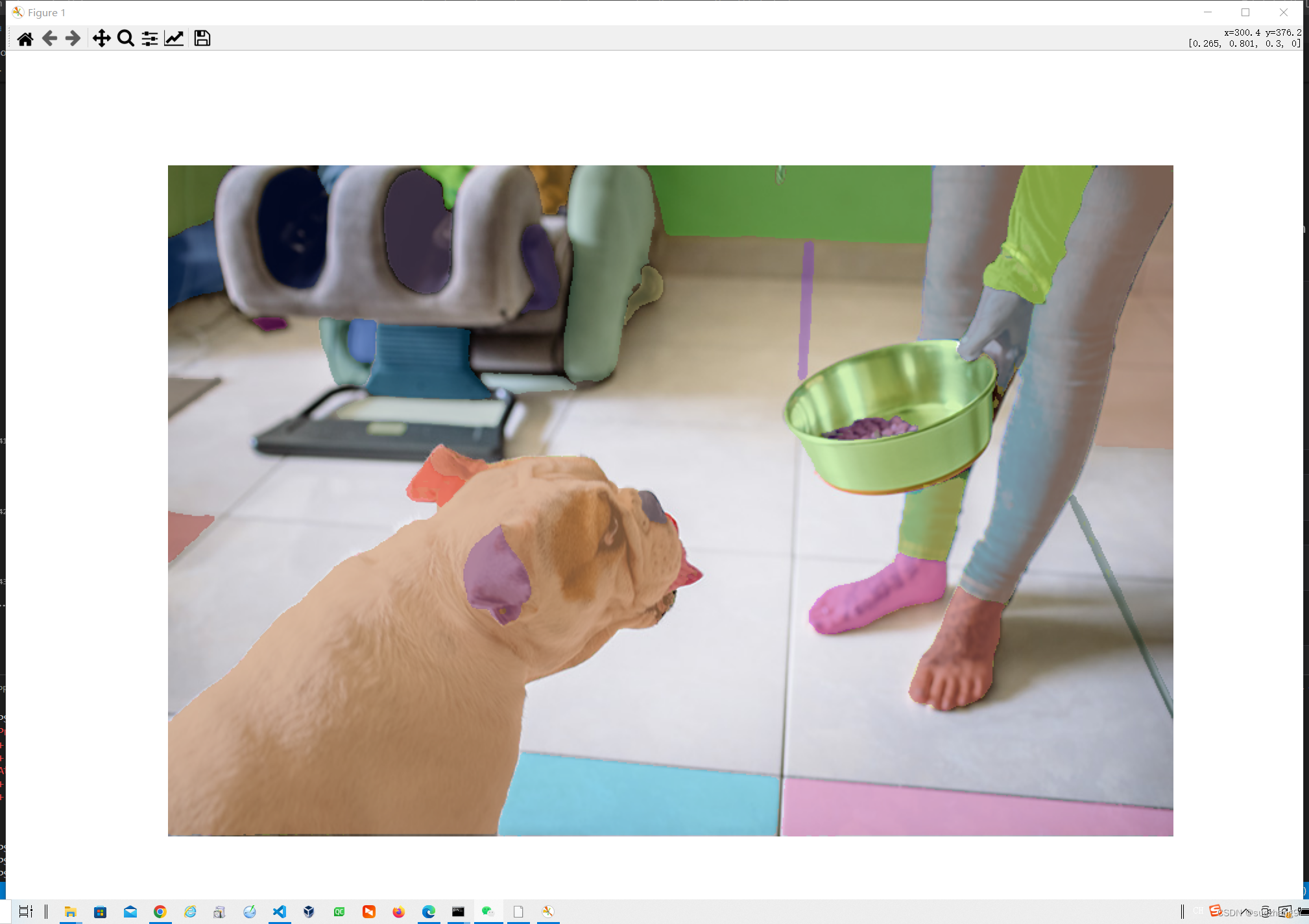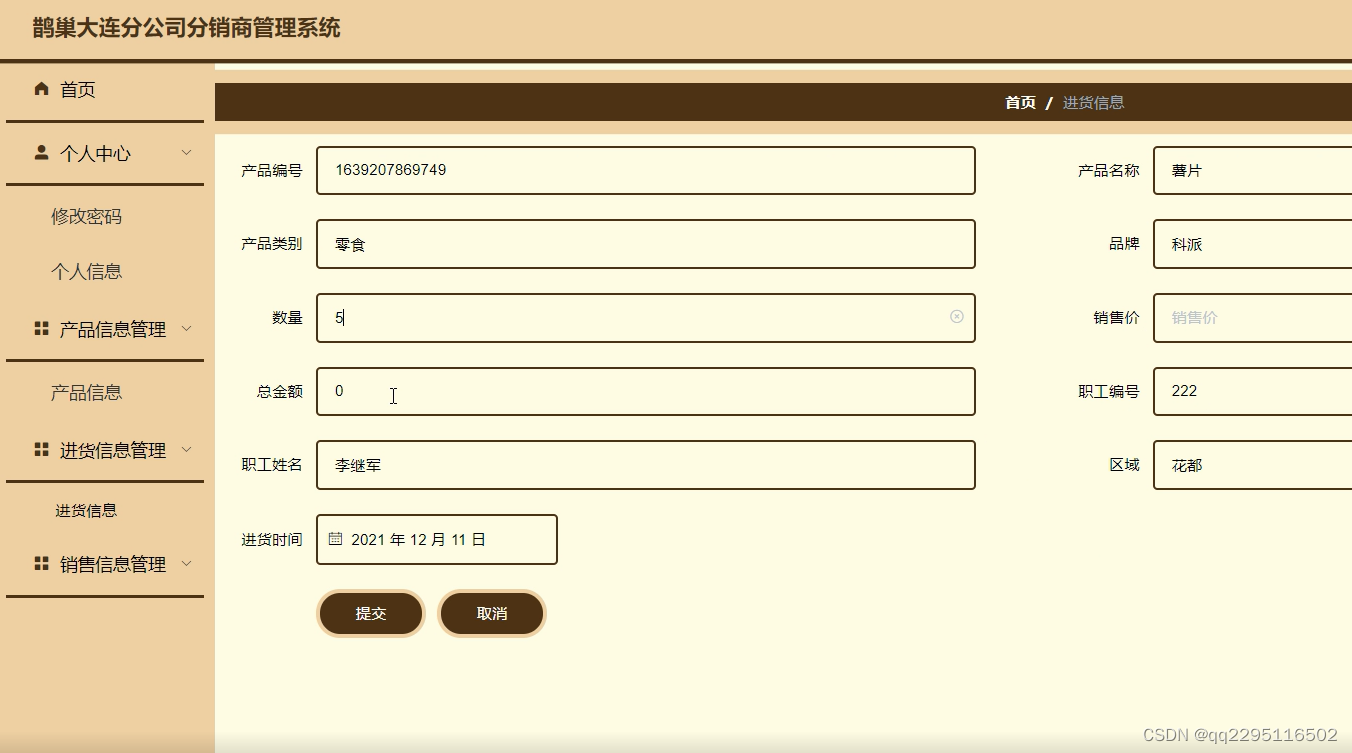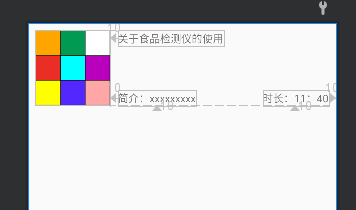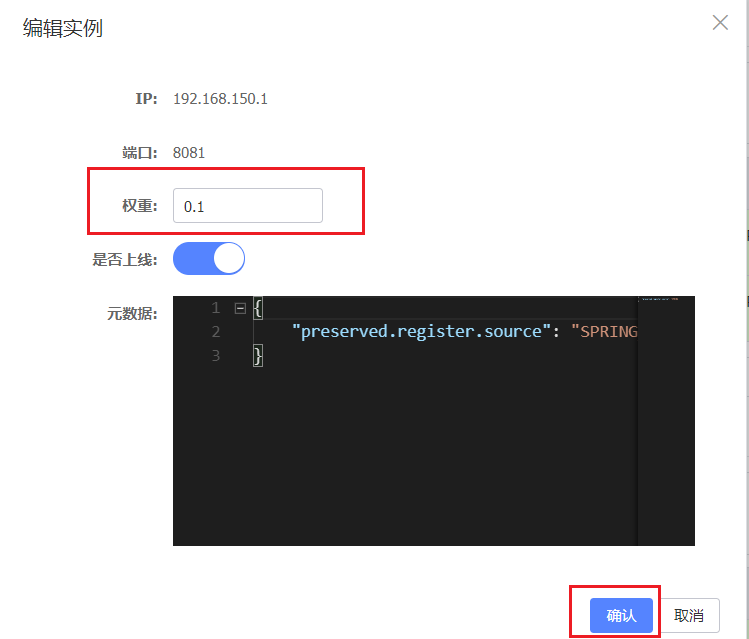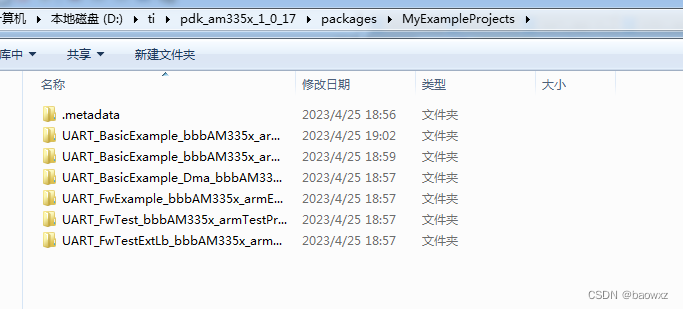前面分析了 request 与 handler method 映射关系的注册,现在再来分析一下 SpringMVC 是如何根据 request 来获取对应的 handler method 的?
可能有人会说,既然已经将 request 与 handler method 映射关系注册保存在了 AbstractHandlerMethodMapping.MappingRegistry#registry 中,那么根据 request 不就能直接从 registry 中获取到相应的 handler method 了吗?
如果我们定义的 Controller 中的 @RequestMapping 都是普通的字符的话,那确实是可以直接通过 registry 获取 handler method。
但是,@RequestMapping 还支持占位符、通配符等 url,例如:
@RequestMapping("/resources/ima?e.png") // 匹配路径段中的一个字符
@RequestMapping("/resources/*.png") // 匹配路径段中的零个或多个字符
@RequestMapping("/resources/**") // 匹配多个路径段
@RequestMapping("/projects/{project}/versions") // 匹配路径段并将其捕获为变量
@RequestMapping("/projects/{project:[a-z]+}/versions") // 使用正则表达式匹配并捕获变量
所以,查找 request 对应的 handler method 就不是那么简单的事情了。
如何通过 request 获取 handler?
通过对 DispatcherServlet 的分析,我们知道 SpringMVC 获取 handler 的方法如下:
org.springframework.web.servlet.DispatcherServlet#getHandler()
protected HandlerExecutionChain getHandler(HttpServletRequest request) throws Exception {
if (this.handlerMappings != null) {
for (HandlerMapping mapping : this.handlerMappings) {
HandlerExecutionChain handler = mapping.getHandler(request);
if (handler != null) {
return handler;
}
}
}
return null;
}
可以看出,SpringMVC 是通过 HandlerMapping#getHandler() 来获取 request 对应的 handler method 处理程序的,最终会拿到一个 HandlerExecutionChain。
HandlerExecutionChain中包含了 request 对应的 handler method 和 interceptors。
HandlerMapping 的类图如下:
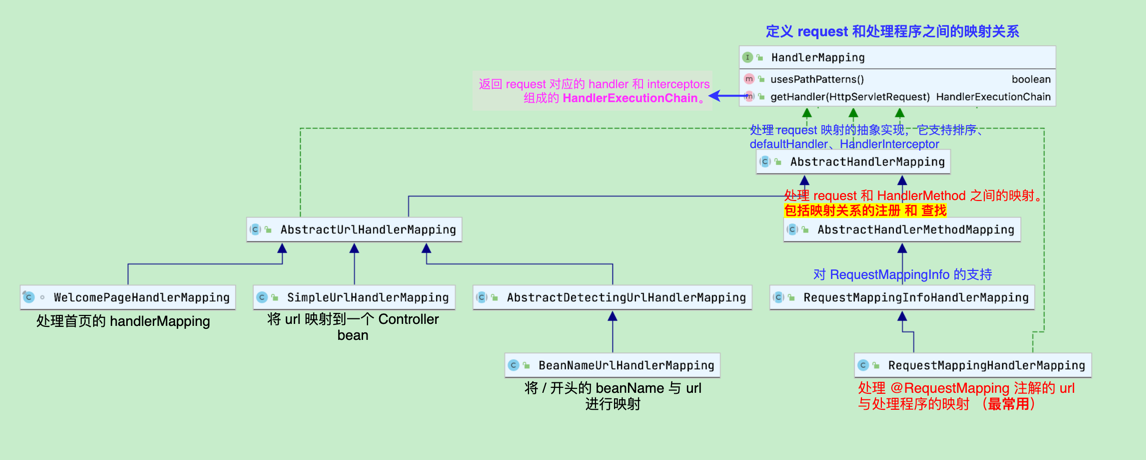
HandlerMapping 的实现类中其中最常用的是 RequestMappingHandlerMapping,它是专门用来处理 @RequestMapping 定义的 request 请求映射的。
获取 HandlerExecutionChain 的过程
HandlerExecutionChain 的获取是在 AbstractHandlerMapping#getHandler() 中完成的。
主要分成了两步:
1、获取 request 对应的 handler 程序
2、将 handler 和 相应的 HandlerInterceptors 组装成 HandlerExecutionChain

获取 request 对应的 handler method 的过程
上一步获取 HandlerExecutionChain 时,会调用 AbstractHandlerMethodMapping#getHandlerInternal() 来获取 request 对应的 handler method。
最终它会调用到 AbstractHandlerMethodMapping#lookupHandlerMethod() 来获取。

可以看到,AbstractHandlerMethodMapping#lookupHandlerMethod 实现了 request 与 handler method 映射关系的查找:
1、首先,通过 directPath 直接获取映射的 handler method
2、如果通过 directPath 没有找到的话,就循环 registry 中所有的映射,查出映射关系
3、如果获取到的映射的 handler 个数 > 1 的话,就找出最合适的匹配
DirectPath: 非 patterns 的 path。
非 patterns 的 path 是指 path 的定义中没有 ?、*、{} 的 path
通过 lookupPath 获取 HandlerMethod
AbstractHandlerMethodMapping#lookupHandlerMethod() 在寻找 HandlerMethod 时,有两种逻辑:
- 1、直接通过 directPath 快速查找
- 2、循环所有的映射关系,查找 RequestCondition 条件匹配,获取最合适的匹配
直接通过 directPath 快速查找
directPath 是最快速的方式,直接从 map 中获取匹配结果。
directPath 是不包含占位符、模式匹配符的普通路径,所以这种普通路径是最直接,也是效率最高的。
循环所有的映射关系,通过 RequestCondition 条件匹配,获取最合适的匹配
如果通过 directPath 没有找到任何匹配的话,就需要遍历所有注册的映射关系,找出最合适的匹配。
addMatchingMappings(this.mappingRegistry.getRegistrations().keySet(), matches, request);
// 这里会循环所有注册的映射关系,将满足 RequestCondition 的映射查找出来,存放到 matches 中
private void addMatchingMappings(Collection<T> mappings, List<Match> matches, HttpServletRequest request) {
for (T mapping : mappings) {
T match = getMatchingMapping(mapping, request);
if (match != null) {
matches.add(new Match(match, this.mappingRegistry.getRegistrations().get(mapping)));
}
}
}
对于 @RequestMapping 注解形式的 url 映射,AbstractHandlerMethodMapping#getMatchingMapping() 最终会调用实现类的方法 RequestMappingInfoHandlerMapping#getMatchingCondition() 来获取匹配。
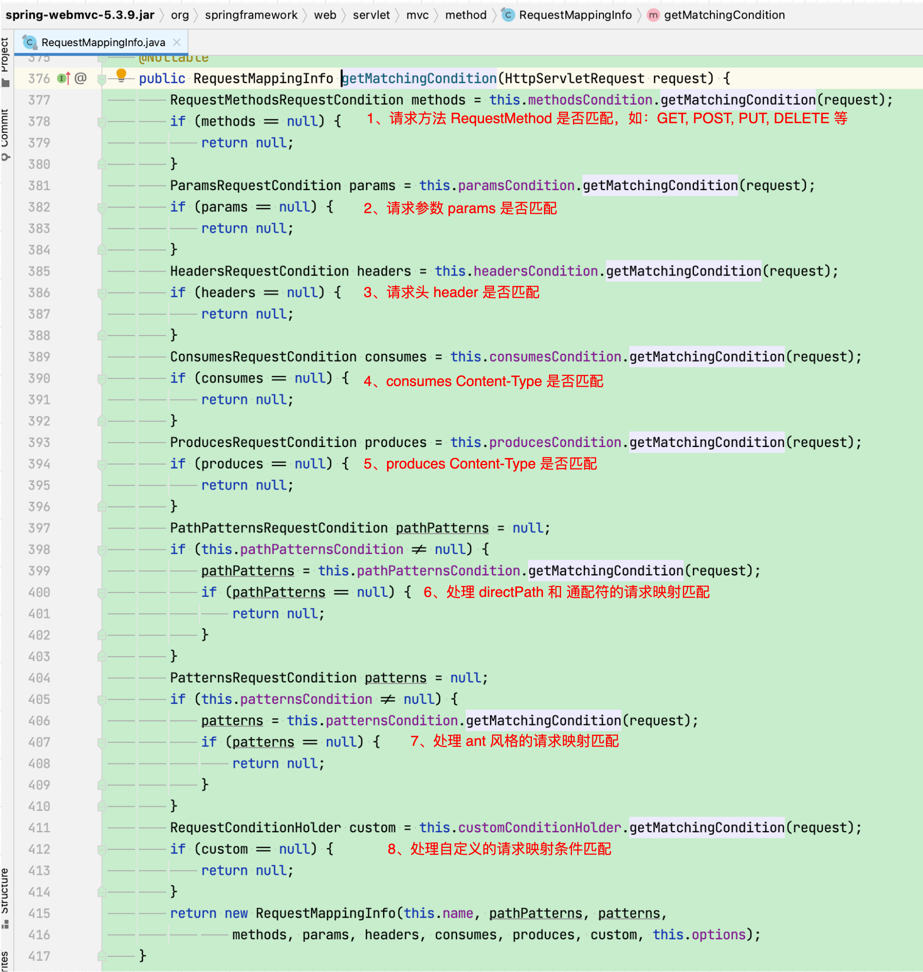
可以看到,Spring 会检查 RequestMappingInfo 是否满足以下 8 个条件:
1、请求方法 RequestMethod 是否匹配,如:GET, POST, PUT, DELETE 等
2、请求参数 params 是否匹配
3、请求头 header 是否匹配
4、consumes Content-Type 是否匹配
5、produces Content-Type 是否匹配
6、处理 directPath 和 通配符的请求映射匹配
7、处理 ant 风格的请求映射匹配
8、处理自定义的请求映射条件匹配
关于 RequestCondition 的详细分析查看 @RequstMapping和RequestCondition
小结
SpringMVC 是通过 HandlerMapping#getHandler() 来获取 request 对应的 handler method 处理程序的。
底层实现是通过 AbstractHandlerMethodMapping#lookupHandlerMethod 来查找 request 对应的 handler method:
1、首先,通过 directPath 直接获取映射的 handler method
2、如果通过 directPath 没有找到的话,就循环 registry 中所有的映射,查出映射关系
3、如果获取到的映射的 handler 个数 > 1 的话,就找出最合适的匹配
对于 url 映射中的通配符、ant 风格的请求,都是通过 RequestCondition 接口来进行处理的。

